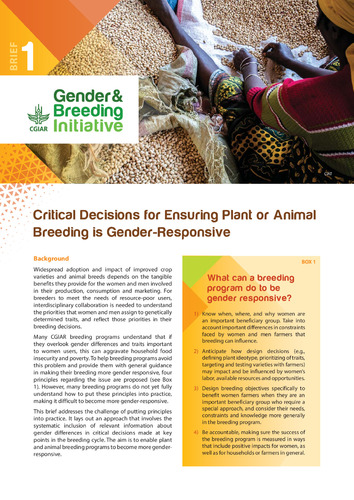Critical Decisions for Ensuring Plant or Animal Breeding is Gender-Responsive
Abstract
Widespread adoption and impact of improved crop varieties and animal breeds depends on the tangible benefits they provide for the women and men involved in their production, consumption and marketing. For breeders to meet the needs of resource-poor users, interdisciplinary collaboration is needed to understand the priorities that women and men assign to genetically determined traits, and reflect those priorities in their breeding decisions. Many CGIAR breeding programs understand that if they overlook gender differences and traits important to women users, this can aggravate household food insecurity and poverty. To help breeding programs avoid this problem and provide them with general guidance in making their breeding more gender responsive, four principles regarding the issue are proposed (see Box 1). However, many breeding programs do not yet fully understand how to put these principles into practice, making it difficult to become more gender-responsive. This brief addresses the challenge of putting principles into practice. It lays out an approach that involves the systematic inclusion of relevant information about gender differences in critical decisions made at key points in the breeding cycle. The aim is to enable plant and animal breeding programs to become more gender responsive.

